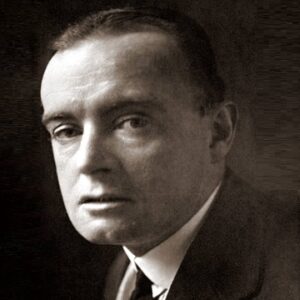Hector Hugh Munro, also known as Saki, was a witty British author. The origins of his pen name ‘Saki’ are unknown. He is considered one of the greatest short story writers, comparable to O. Henry and Dorothy Parker. Munro was profoundly influenced by Oscar Wilde’s, Rudyard Kipling’s, and Lewis Carroll’s writings. His stories were first published in newspapers and were later compiled into several volumes. Munro also wrote a full-length play, two one-act plays, a historical study, and a short novel. He was a major influence on A. A. Milne, Noel Coward, and P. G. Wodehouse. Munro went to Burma (Myanmar) in his early twenties to join the Colonial Burmese Military Police but was forced to return to England due to ill health. He then began his career as a journalist. He contributed to a variety of publications, including the Daily Express, Bystander, Morning Post, and Outlook.
Childhood & Adolescence
Hector Hugh Munro was born in Akyab, British Burma, on December 18, 1870, to Charles Augustus Munro and Mary Frances Mercer.
His father was the Indian Imperial Police’s Inspector General, and his mother was Rear Admiral Samuel Mercer’s daughter.
When he was two years old, his mother died and his father sent him and his sister to England to live with his grandmother and aunts.
He attended Pencarwick School in Exmouth before being transferred to Bedford School, where he stayed in a hostel.
Hector joined the Indian Imperial Police in 1893 and served in Burma for two years before being forced to return to England due to ill health.
He enlisted as an ordinary trooper in the 2nd King Edward’s Horse at the outbreak of World War I, despite the fact that he was already 43 years old and over age.
He later became a lance sergeant in the Royal Fusiliers’ 22nd Battalion.
Career of Saki
He began his writing career as a journalist for Morning Post, Westminster Gazette, and Daily Express newspapers. He also worked as a journalist for the magazines Outlook and Bystander.
His first book, titled ‘The Rise of the Russian Empire,’ was published in 1900. This was inspired by Edward Gibbon’s ‘The Decline and Fall of the Roman Empire.’
Between 1902 and 1908, he worked as a foreign correspondent for the Morning Post in the Balkans, Warsaw, and Russia.
In 1902, he published a political sketch titled ‘The Women Who Should Never’, followed by two additional political sketches titled ‘The Westminster Alice’ and ‘The Not So Stories’ the following year.
Saki was regarded as the master of the short story. In 1904, he published a collection of short stories titled ‘Reginald.’ This was followed by a series of short stories from 1904 to 1911, including ‘Reginald’ in 1910 in Russia and ‘The Chronicles of Clovis’ in 1911.
His first novel, titled ‘The Unbearable Bassington’, was published in 1912. He wrote a “what if” novel, ‘When William Came: A Story of London Under the Hohenzollerns’, in 1913, sometime before World War 1.
Posthumous works in his name include the 1919 short story collection ‘The Toys of Peace’ and the 1924 collection ‘The Square Egg and Other Sketches’. He also co-wrote a play with Charles Maude, which was published in 1924.
Eight volumes of “The Works of Saki” were published between 1926 and 1927. Saki’s Complete Short Stories were published in 1930.
Between 1950 and 2010, Saki published a number of works, including “The Miracle Merchant,” a one-act play, “A Shot In The Dark,” a collection of 15 uncollected stories, and “Improper Stories” in 2010.
Achievements Saki
Saki’s plays and short stories have also been adapted into television series and stage productions. Three of his short stories – “The Storyteller”, “The Lumber Room”, and “Sredni Vashtar” – were featured in the BBC television production Who Killed Mrs De Ropp? in 2007.
“Saki: The Improper Stories of H. H. Munro” was a 1962 Granada Television eight-part series. His works have also been adapted into stage plays, including ‘Saki Shorts’, ‘The Playboy of the Week-End World’, ‘Miracles At Short Notice’, and ‘Wolves At The Window’.
Personal History and Legacies
Munro had three siblings, and following their mother’s death, they all moved to England to live with their grandmother.
Munro is said to have been homosexual, but because homosexuality was considered a crime in nineteenth-century Britain, this aspect of Munro was kept hidden. He was assassinated on the Western Front during World War I by a German sniper.
On Pier and Face 8C 9A and 16A of the Thiepval Memorial, Munro was shown respect. Munro’s grave is unmarked. Munro’s flat serves as a historical marker, having been designated by English Heritage with a blue plaque in 2003.
Estimated Net Worth
Gokhan is one of the wealthiest MMA fighters and is included in the list of the most popular MMA fighters. Gokhan Saki’s net worth is estimated to be around $2 million, based on our analysis of Wikipedia, Forbes, and Business Insider.


